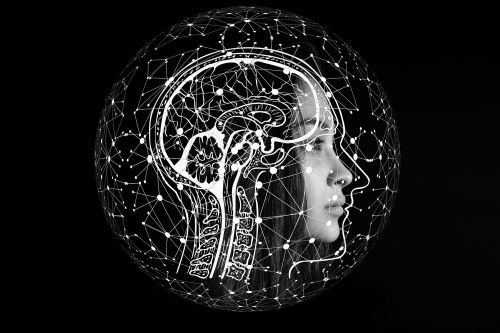Context-
Modern genetics has established that all humans are equal. But human history is replete with people from one cultural or social group treating those from others as if they are less than human. The basis of this deep-seated tendency continues to be the focus of intense research efforts in psychology and neuroscience
Understanding Implicit Bias
● Despite the scientific fact of human equality, implicit biases persist, influencing how individuals perceive and interact with different racial and social groups. Psychological studies, such as those employing the Implicit Association Test (IAT), reveal discrepancies between explicit statements endorsing equality and implicit biases favoring socially advantaged groups.
● One study, published in May last year, analyzed responses from over 60,000 participants across racial groups, demonstrating implicit biases in favor of socially advantaged groups despite explicit assertions of belief in racial equality. The IAT, which measures response times in associating words and concepts, reveals subconscious preferences that may contradict individuals' conscious beliefs. This discrepancy highlights the complexity of human cognition and the need for nuanced approaches to addressing implicit bias.
● Further research into the development of implicit biases is crucial for identifying potential interventions that can mitigate their influence on decision-making processes and social interactions. By elucidating the cognitive mechanisms involved in bias formation and maintenance, psychologists and neuroscientists can develop targeted strategies to promote more equitable attitudes and behaviors in diverse populations.
The Shifting Criteria of In-Group Bias
● Research in psychology and neuroscience suggests that the brain's categorization of individuals into "us" versus "them" is influenced by various factors, including social identity and perceived differences from out-groups. A study published in Frontiers in Psychology observed that directing participants' attention to different facets of their in-group identity led to changes in intergroup bias. By highlighting specific aspects of social identity, such as race or age, researchers demonstrated the malleability of individuals' preferences and biases.
● Moreover, recent advancements in neuroimaging techniques offer opportunities to explore the neural mechanisms underlying the flexibility of in-group bias. By investigating brain regions implicated in social cognition and decision-making, researchers can gain insights into how contextual factors modulate intergroup attitudes and behaviors.
● Understanding the dynamic nature of in-group bias has important implications for fostering intergroup cooperation and reducing prejudice and discrimination. By promoting awareness of the fluidity of social identities and encouraging empathy and understanding across group boundaries, interventions can help bridge divides and promote social cohesion.
Neurobiological Basis of Bias
● Neuroimaging studies have elucidated the neural mechanisms underlying bias, implicating regions such as the amygdala in threat detection and fear-based learning. Imaging studies have shown heightened amygdala activation in response to perceived threats from out-group members, suggesting a neurobiological basis for intergroup bias.
● Additionally, cortical activation in response to reconciliatory statements indicates a cognitive effort to regulate emotions and impulses, highlighting the complexity of bias in human cognition. These neurobiological insights offer valuable perspectives on the interaction between biology and culture in shaping intergroup attitudes and behaviors.
● Exploring the neurobiological basis of bias can inform the development of interventions aimed at reducing prejudice and promoting social cohesion. By targeting neural circuits involved in threat perception and emotion regulation, researchers can develop strategies to mitigate the impact of bias on decision-making and promote more equitable social interactions.
Learning and Unlearning Bias
● While bias may have evolutionary roots in threat detection and social categorization, it is also a learned response influenced by cultural associations and social norms. Factors such as exposure to diverse perspectives and experiences can mitigate bias by challenging entrenched stereotypes and promoting empathy and understanding.
● Moreover, interventions aimed at reducing bias, such as diversity training and intergroup contact programs, can help individuals recognize and confront their implicit biases. By fostering awareness and promoting inclusive behaviors, these interventions contribute to creating more equitable and harmonious societies.
● Educational initiatives that promote critical thinking and perspective-taking skills can also play a crucial role in mitigating bias and fostering intergroup understanding. By equipping individuals with the tools to challenge stereotypes and engage in empathetic communication, education can empower individuals to resist the influence of bias and promote social justice and inclusion.
Implications for Reconciliation
● A better understanding of the neurobiological and psychological mechanisms underlying bias can inform efforts to promote reconciliation and social cohesion. By addressing the root causes of bias and promoting empathy and understanding across diverse communities, societies can work towards overcoming entrenched divisions and fostering mutual respect and cooperation.
Conclusion
In conclusion, bias is a complex and multifaceted phenomenon rooted in both biology and culture. Understanding its underlying mechanisms and dynamics is essential for developing effective strategies to mitigate its effects and promote social harmony. Through interdisciplinary research and targeted interventions, societies can strive towards a more equitable and inclusive future.
|
Probable Questions for UPSC Mains Exam- 1. How do neurobiological and cognitive mechanisms interact to shape implicit bias and in-group preferences in human cognition? ( 10 Marks, 150 Words) 2. What are the implications of neuroscientific research on bias for interventions aimed at promoting social cohesion and reducing prejudice in diverse societies?.( 15 marks, 250 words) |
Source- the Hindu









